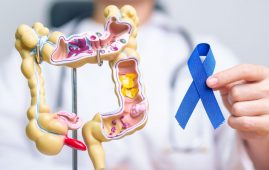

A recent study published in the journal PLOS ONE revealed new information about the long-term repercussions of the COVID-19 outbreak in Los Angeles County. Scientists at USC and the Los Angeles County Department of Public Health (DPH) discovered that existing mental health gaps between white and non-white residents widened.
The study employed two surveys done in 2018 and spring 2021 to assess the probability of major depression among people, as well as statistics on death rates. The researchers looked at monthly averages from March 2020 (when the first shelter-in-place orders were issued) to mid-April 2021 (after the peak of the epidemic). This data was used to divide the county into three zones.
COVID-19 mortality rates are highest in metropolitan Los Angeles, South L.A. County, and East L.A. County, lowest in West L.A. County and the South Bay, and middle in the San Gabriel, San Fernando, and Antelope Valleys.
Residents in areas with high COVID-19 mortality were more likely to be depressed than those in areas with moderate or low COVID-19 mortality, as may be expected. However, when the researchers categorized survey respondents by race, they discovered a clear divide. They discovered an overall tendency of increased depression risk in harder-hit areas among non-white Los Angeles County residents, including those of Asian, Black, Hispanic, and Indigenous racial and ethnic groupings, but not among white inhabitants.
In 2021, non-white respondents in the area most affected by COVID-19 deaths were more likely to feel depressed than those in the low COVID-19 mortality zone.
Even in 2018, non-white residents of Metro L.A., South L.A., and East L.A. had a higher risk of depression than non-white residents of West L.A. and the South Bay. By 2021, the gap had grown. Even after controlling for other variables, the researchers’ findings remained consistent.
The pandemic hit non-whites much harder than whites, and we speculated that the mental health impact was tied to living conditions. You might see people in multigenerational households, meaning that when COVID-19 hit, they would not have enough space to quarantine from family members. The type of jobs that they worked might be in industries offering little protection and little time off to even get tested. This could thoroughly increase their stress and eat away at their ability to cope with the pandemic.
Jonathan Lam, PhD, MPH, Study Corresponding Author and Assistant Professor,
Research Emergency Medicine, Keck School of Medicine, University of Southern California
Identifying discrepancies in pandemic dangers to life, Mental Health and well-being
The study depicts a disparity in the effects of COVID-19 on areas in Los Angeles County. In each of the three zones, the death rate from coronavirus was more than twice as high among non-white inhabitants as among white residents.
Other figures indicated a significant reversal. In 2018, white L.A. County inhabitants in all three zones had a higher death rate than non-white residents. The Latino paradox may be at the foundation of this disparity, given that the majority of non-white Los Angeles County citizens are Hispanic. Latinos have had better life expectancy and lower mortality rates than whites since the 1980s, despite facing socioeconomic circumstances and health concerns that contradict that advantage.
The study adds to the growing evidence that the coronavirus has, at least temporarily, eliminated the Latino dilemma.
“Post-COVID, non-whites have higher mortality,” said senior author Neeraj Sood, PhD, a professor at the USC Price School of Public Policy and director of the COVID Initiative at the USC Schaeffer Center for Health Policy & Economics. “There’s a stark divide in terms of COVID’s impact. Depending on who you are and where you live, your experience during the pandemic could be far worse.”
The 2021 survey was part of the Los Angeles Pandemic Surveillance Cohort Initiative, a cooperation between the USC Schaeffer Center, the Keck School of Medicine’s Department of Population and Public Health Sciences, and the Los Angeles County Department of Public Health. The researchers polled 1,222 people from all over the country on how frequently they had experienced sad mood and a lack of enjoyment from everyday activities in the previous two weeks. The existing 2018 survey included the same measures.
The researchers’ findings contributed to a better understanding of the pandemic’s long-term impacts on mental health in Los Angeles County, which had previously been overlooked. What they found may aid attempts to alleviate these difficulties through programs such as the Los Angeles County DPH’s Wellness Centers and Community Public Health Team Initiatives
“These results raise awareness about the significant impact of living and working conditions on emotional well-being, particularly in lower-income, Black and Latino communities,” said co-author William Nicholas, PhD, MPH, director of the Center for Health Impact Evaluation at the Los Angeles County DPH. “It’s vital for us to recognize that improving mental health requires investment in efforts that address the social and economic conditions that influence all health outcomes.”
The study could also help target assistance in the case of any viral outbreaks to come.
Lam said: “A similar pandemic could happen in the future. Our research provides an interesting test case for how we adapt. When we design how we allocate our mental health resources, we ought to put more into the communities with the highest need.”
more recommended stories
 Brain’s Biological Age Emerges as Key Health Risk Indicator
Brain’s Biological Age Emerges as Key Health Risk IndicatorClinical Significance of Brain Age in.
 Children’s Health in the United States is Declining!
Children’s Health in the United States is Declining!Summary: A comprehensive analysis of U.S..
 Emotional Processing for Chronic Pain Relief
Emotional Processing for Chronic Pain ReliefA groundbreaking clinical trial led by.
 Egg White Proteins for Hypertension
Egg White Proteins for HypertensionEgg white proteins for hypertension have.
 Limited Health Care Access During Disasters Delays Colorectal Cancer Diagnoses
Limited Health Care Access During Disasters Delays Colorectal Cancer DiagnosesNatural disasters like Hurricanes Irma and.
 Ethical Issues in Human-AI Relationships
Ethical Issues in Human-AI RelationshipsAs artificial intelligence becomes increasingly lifelike.
 Vegetarian Diets and Healthy Aging: Does Diet Quality Make a Difference?
Vegetarian Diets and Healthy Aging: Does Diet Quality Make a Difference?Vegetarian diets are widely recognized for.
 Mental Health Pros May Miss Bulimia Signs – Here’s Why
Mental Health Pros May Miss Bulimia Signs – Here’s WhyA recent study by the University.
 New Study Questions Fluid Restriction in Heart Failure Management
New Study Questions Fluid Restriction in Heart Failure ManagementA groundbreaking study presented at the.
 Machine Learning Predicts Early Mortality in IBD Patients
Machine Learning Predicts Early Mortality in IBD PatientsA groundbreaking study published in the.

Leave a Comment